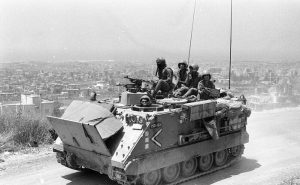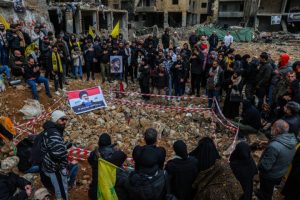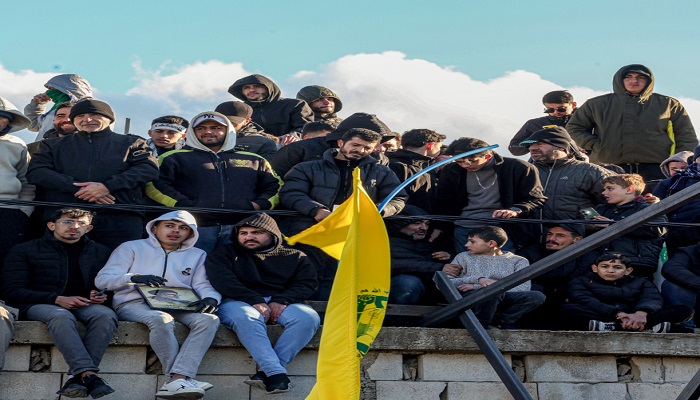PNN – Contrary to what some pretend, the current realities of Lebanon are fundamentally different from the situation in 1982; a year in which the collapse of national foundations engulfed Lebanon and Palestine, leading the Beirut government to the May 17, 1983 agreement and the Palestine Liberation Organization to the Oslo Accords in 1993.
Since the announcement of a ceasefire agreement between Lebanon and Israel at the end of November 2024, the idea of comparing what happened after Israel’s invasion of Lebanon in 1982 and what we are witnessing these days has been repeated many times, especially when it comes to the security-diplomatic process that may lead to the normalization of relations between Lebanon and Israel.
A realistic reading forces us not to look at the past through the lens of current realities and not to judge today’s conditions through the lens of the past; therefore, each event must be examined in its own time context in order to reach a conclusion that is as objective as possible.
To avoid overwhelming the reader with details, we will only mention the most important results of the Israeli war in 1982 and the most important results of the Israeli war in 2024.
The Zionist army’s advance to Beirut in 1982
Israel called its 1982 war “Peace for Galilee” and, according to its understanding with the United States, operations were to be stopped at the border of the Awali River (40 kilometers, the maximum range of the Katyusha rocket at the time). However, then-Israeli Minister of War Ariel Sharon, based on information from internal and Lebanese sources, convinced Prime Minister Menachem Begin to expand the military operation to the Lebanese capital. This decision initially angered the Americans, but soon they provided all the necessary support to the Begin government; not only military, but also political support through the UN Security Council.
Thus, Sharon advanced his forces towards the capital, Beirut, in just a few days and eventually succeeded in imposing a 72-day siege on Beirut; a siege accompanied by heavy land, sea, and air bombardment, as well as depriving residents of water, electricity, medicine, and other basic necessities of life. However, all attempts to enter the city failed, thanks to the defensive line provided by the Palestinian resistance with all its factions, the Syrian army, and the Lebanese National Movement.

As Israel increased pressure on Beirut, Lebanese leaders at the time decided to ask Yasser Arafat, head of the Palestine Liberation Organization, to agree to the plan of Philip Habib, an American envoy of Lebanese descent; a plan that included the naval withdrawal of all Palestine Liberation Organization fighters from Beirut and the ground withdrawal of Syrian army forces.
Tensions after the occupation and forcing Lebanon to hold “peace talks”
Less than three weeks later, Jamil was assassinated at the Kataeb party headquarters in Ashrafieh, and parliament elected his brother, Amin Jamil, as president. Amin quickly appointed Shafiq Al-Wazzan, a Beiruti lawyer, as prime minister. At the same time, forces from multinational armies (America, France, and Italy) were deployed on the streets of Beirut, and the Lebanese army was reorganized under a single command to implement the policies of the new political power, a policy whose first priority was the so-called pursuit of “illegal weapons.”
In addition, Israel forced Lebanese political authorities to hold what were called “peace talks” that took place between the Lebanon Beach Hotel in the Khaldeh area south of Beirut and a hotel in the Kiryat Shmona colony in northern occupied Palestine. These talks did not last long until an agreement known as the May 17 Agreement (signed in 1983) was approved.
It can be said that the result of Israel’s aggression at that time was a clear victory for this regime and the undisputed defeat of the resistance forces – including Palestinian and Lebanese groups – as well as Syria and their international ally, the Soviet Union and the bloc of socialist countries.
Third war against Lebanon
In October 2024, Israel launched a new ground invasion of Lebanon, dubbed the “Third Lebanon War.” The attack came more than a year after Hezbollah began its war in support of Gaza, which involved exchanging rocket and artillery fire with the Israeli military across the Lebanese border.
Before the war began, Israel blew up thousands of pagers and wireless communication devices through an intelligence operation planned over years, an operation that resulted in the withdrawal of more than five thousand Hezbollah forces from the battlefield. Subsequently, a wave of assassinations occurred that targeted most of the party’s military commanders, including Secretary General Sayyed Hassan Nasrallah, his successor Sayyed Hashem Safi al-Din, and the commanders of the “Ridwan Battalion.”

Subsequently, the Israeli army, which thought it would have an easy ground advance after these strikes, was surprised by the intensity of the resistance of the ground force defenders; to the extent that, despite heavy ground and air bombardment that continued day and night for 66 days, it was unable to advance more than two to three kilometers deep into the Lebanese border strip.
Sheikh Naim Qassem, the current Secretary-General of Hezbollah, stated that the resistance fighters rejected all requests from the command to retreat and insisted on continuing the fight in a martyr-seeking manner.
A Chinese introduction to entering the “Israeli era”!
According to official Israeli statistics, the occupying army has martyred more than 120 Lebanese citizens since the ceasefire, which has been in place for more than 120 days. This is despite the fact that Hezbollah has fully adhered to the agreement and has informed the Lebanese army of the location of its weapons and ammunition depots in the south of the Litani. However, American General Jasper Jeffers, head of the ceasefire monitoring committee, did not allow the Lebanese army to keep these weapons and ammunition and insisted that they be destroyed on site; this was actually implemented in more than 500 locations that came under the control of the Lebanese army south of the Litani River.
In light of this current reality, some believe that Lebanon has entered the “Israeli era” and that there is no escape for the newborn Lebanese government – including its new presidency and government – from submitting to the dictates of “Israel” and the United States. Some prominent political forces in Lebanon have also begun to propagate the idea that the resistance in Lebanon has ended and that normalization of relations with “Israel” should take place.
The bitter irony of the story is that these same forces promoted this logic in 1982 and even collaborated with “Israel” in pursuing or kidnapping resistance forces, hundreds of whose fates are still unknown.
The difference between 2025 and 1982
The comparison between the two wars with Israel is, of course, not correct. In 1982, the Israeli army reached the heart of the capital, Beirut, and its soldiers drank coffee in the cafes of Alhambra Street. Forces from three NATO countries (the United States, France, and Italy), Israel’s allies, were also stationed in military bases in Beirut. An Israeli patrol even entered the Soviet embassy in the Corniche al-Mazraa area of Beirut. At that time, the resistance forces were limited to small groups: the Lebanese Communist Party, the Communist Labor Organization, the Syrian Ethno-Social Party, the Arab Socialist Labor Party, and the Arab Socialist Union (Nasserist Organization), which were equipped only with light weapons such as machine guns, grenades, and RPGs.
In those days, despair and hopelessness reigned. People, fearing arrest by Israeli forces, threw their personal weapons into trash cans on the streets of Beirut. But in 2024, the Israeli army failed to advance more than three kilometers from the Lebanese border during the 66-day war, despite the intensity and scope of the conflict that lasted for more than two months.
The US did not even send its ground forces and only sent General Jasper Jeffers, because it knew very well that it could not send its army to Lebanon. He had two painful experiences in this regard; first, in 1958, when American soldiers were involved in a conflict in the Al-Awzai region while supporting the then Lebanese President Kamil Chamoun (an ally of the Baghdad Pact). Second, in 1983, when the US Marine Corps headquarters on the road to Beirut airport was blown up, killing 246 American soldiers. We should not forget the experience of France, which in the same year blew up its military headquarters in Beirut, killing more than 60 people.
It can be said that the biggest strategic loss for the resistance today is the loss of Syria, a country that was the lifeline of support for the resistance for more than four decades. Also, in the past, there was the Soviet Union (and its Warsaw Pact allies) led by Yuri Andropov, which supported Syria and stood by the resistance in Lebanon.
In 1982, there was a “Sustainable Front” consisting of the governments of Iraq, Libya, and Syria. Imam Khomeini’s revolution also demonstrated its position towards Palestine in practice by sending a force from the Islamic Revolutionary Guard Corps that founded Hezbollah and the resistance; a resistance that was manifested in the martyrdom operation of “Ahmad Qusayr” in November 1982 and the explosion of the Israeli military headquarters in the city of Tyre.

